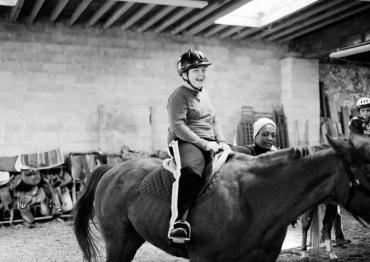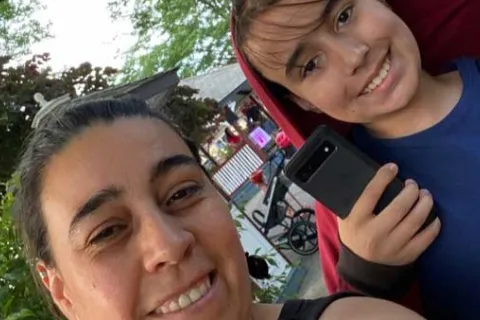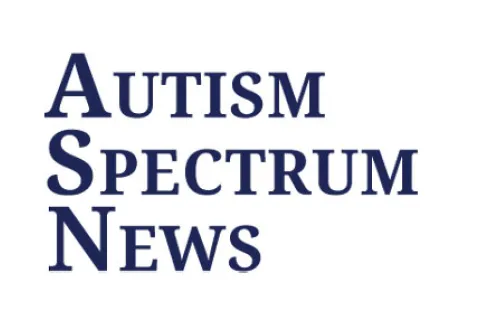Horseback Riding as Autism Therapy
By Alicia Kershaw, founder and executive director of GallopNYCThis answer comes from guest blogger Alicia Kershaw, founder and executive director of GallopNYC, a therapeutic horseback riding organization based in Brooklyn. GallopNYC instructors are certified by the Professional Association of Therapeutic Horsemanship International.
I’d like to know more about equine therapy. Can horseback riding really help people with autism?
Equine therapy for autism
I grew up on a farm where I spent a lot of time with horses. I love these empathetic, gorgeous animals who, back in the dawn of time, became domesticated and began to help human beings improve their lives. My world was filled with stories of remarkable horses – especially those that “took care of their riders.”
Now, as the executive director of GallopNYC, I spend my days with horses. Riding horses is fun, and even people with severe autism can do well at riding. Horses calm riders with autism, allowing them to focus, think and accept training. The desire to ride also allows us to encourage positive behaviors and gently discourage negative behaviors.
We use a program called Therapeutic Horsemanship to help riders walk, talk, connect, focus, behave and learn - inspiring each one to live life as fully, productively and independently as possible.
Rather than “riding,” we refer to this work as “horsemanship” because we teach our riders how to care for horses in addition to riding them. The responsibility of handling a horse can help our students see the world from a different standpoint – the horse’s perspective.
We teach riding in a careful and supportive way. A trained volunteer leads each rider’s mount, and two volunteers walk along either side of the horse to ensure the rider’s safety. A certified instructor leads all classes. He or she has specialized training in Therapeutic Horsemanship. At times, we also work with a physical therapist trained in hippotherapy (derived from the Greek word hippos for horse).
We set individual goals for each rider and patiently work on skills such as speech, socialization and fitness. And, yes, one of our goals is “just pure fun.” Every rider learns some measure of riding and horse skills, and some riders become quite accomplished.
“I didn’t know my child could DO that!” is the most frequent comment we hear from parents and teachers watching our riders. It’s one of the many ways we know that Therapeutic Horsemanship really works.
At GallopNYC, we measure each session’s benefits to each rider. Research studies confirm the results we see. One recent study, published in the journal Research in Autism Spectrum Disorders, found that “a 10-week therapeutic horseback riding intervention with children diagnosed with [autism spectrum disorder] can result in significant improvement.” Teachers tell us they see these benefits extend into the classroom, long after the riding session is over.
Parents, too, affirm the benefits of riding. Recently, one mother wrote, “Our family is still beaming and glowing after seeing my son on a horse! It's a dream come true. I have never seen him so responsive to any therapy so immediately!”
One of my most memorable moments was witnessing a lovely young boy on the spectrum spontaneously kiss his pony. He had an immediate and strong affinity with his pony, a joy that will help open other possibilities in his life.
In a recent project funded by Autism Speaks, we trained young adults on the spectrum to work with horses. From there, we helped them apply these lessons to develop workplace skills. We saw how each intern’s sense of responsibility and success in communicating commands produced a self-confidence to try new experiences. At the same time, the program equipped all our interns with important skills.
Dr. Temple Grandin once wrote, “I wish more kids could ride horses today. People and animals are supposed to be together. We spent quite a long time evolving together, and we used to be partners.”
I agree whole-heartedly. People and horses should be together, and even more so, people on the autism spectrum and horses should be together. Ultimately, both people and horses will benefit from this special relationship.
Autism Speaks provided funding for the GallopNYC intern program through its Family Services Community Grants program.










